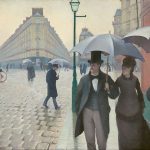
Jules Joseph Lefebvre was a renowned French academic painter of the 19th century, known for his exceptional skill in portrait and figurative painting. He was born on March 14, 1836, in Tournan-en-Brie, a small town in the Seine-et-Marne region of France. Lefebvre’s artistic talent became evident early in life, and he went on to become one of the leading academic artists of his time.
Here is a biography of Jules Joseph Lefebvre:
Early Life and Education:
- Early Interest in Art: Lefebvre displayed a passion for art from a young age. Recognizing his talent, his family supported his artistic pursuits.
- École des Beaux-Arts: In 1852, Lefebvre entered the prestigious École des Beaux-Arts in Paris, where he received formal artistic training under the guidance of renowned painters such as Léon Cogniet and Alexandre Cabanel. His academic training would profoundly influence his artistic style.
Career and Artistic Style:
- Paris Salon Success: Lefebvre began exhibiting his work at the annual Paris Salon in 1857, a practice he would continue for many years. He gained recognition and acclaim for his paintings, particularly for his portraits and mythological and historical scenes.
- Portraiture: Lefebvre’s portraiture skills were highly regarded. His portraits often displayed a meticulous attention to detail and an ability to capture the character and personality of his subjects. Some of his most famous portraits include those of Sarah Bernhardt and the Countess of Rasty.
- Academic Realism: Lefebvre was associated with the Academic Realist style, which emphasized precision, classical composition, and a focus on idealized beauty. His paintings typically featured smooth, polished surfaces and a mastery of color and light.
- Mythological and Historical Subjects: In addition to portraits, Lefebvre also produced works depicting mythological and historical themes. His painting “Truth” (1870) is a notable example of his work in this genre.

Teaching Career:
- École des Beaux-Arts: Lefebvre’s success as an artist led to his appointment as a professor at the École des Beaux-Arts in Paris, where he taught for many years. His role as an educator greatly influenced the next generation of artists.
Legacy:
- Influence on Students: Lefebvre’s teaching left a lasting impact on many prominent artists, including John Singer Sargent, Edmund Tarbell, and Robert Henri, who went on to become influential figures in their own right.
- Honors and Recognition: Throughout his career, Lefebvre received numerous awards and honors, including the Legion of Honour, which is one of France’s highest distinctions.
- End of Life: Jules Joseph Lefebvre continued to paint and teach until his later years. He passed away on February 24, 1911, in Paris, leaving behind a significant body of work and a legacy as one of the leading academic painters of his era.

Jules Joseph Lefebvre’s work, characterized by its technical mastery and classical sensibility, remains admired by art enthusiasts and collectors. His contributions to the academic tradition and his influence on subsequent generations of artists continue to be celebrated in the world of fine art.




